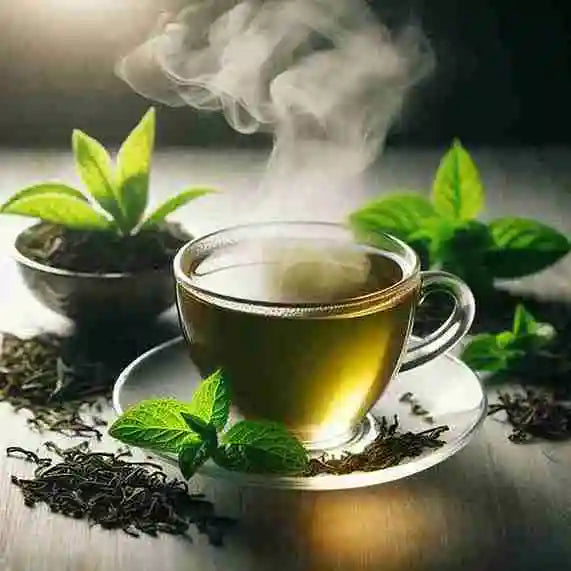Tea is one of the world's most popular beverages, enjoyed by millions daily. But did you know that your favorite cup of tea contains powerful chemicals called catechins? These compounds are responsible for many of tea's health benefits and contribute to its unique flavor. Let's explore the fascinating world of catechins and their role in tea chemistry.
What Are Catechins?
Catechins are a type of natural antioxidant found in various plants, but they're especially abundant in tea leaves. These chemicals belong to a larger group of compounds called flavonoids, which are known for their health-promoting properties. In the realm of tea chemistry, catechins play a starring role. Catechins are natural polyphenolic compounds found in berries, tea, cocoa, and other foods rich in antioxidants. Structurally, catechins consist of two benzene rings (A and B) and a dihydropyran heterocycle © with a hydroxyl group on carbon 3. They have four diastereoisomers, including (+)-catechin and epicatechin.
Catechins in Tea: Types and Sources
When we talk about catechins in tea, we're primarily referring to four main types: 1. Epigallocatechin gallate (EGCG) 2. Epigallocatechin (EGC) 3. Epicatechin gallate (ECG) 4. Epicatechin (EC) Among these, EGCG is the most abundant and well-studied catechin in tea. Green tea is particularly rich in catechins, containing higher levels than other tea varieties like black or oolong tea. This is because green tea leaves undergo minimal processing, which helps preserve these valuable compounds. Other than that, Catechins are abundant in grapes, apples, pears, cherries, and legumes like broad beans and green beans.
The Chemistry of Tea: How Catechins Influence Flavor
Catechins contribute significantly to the chemistry of tea, affecting both its taste and color. These compounds are responsible for the slightly bitter and astringent flavor often associated with green tea. When tea leaves are processed to make black tea, the catechins undergo oxidation, which changes their chemical structure and results in a different flavor profile.
Health Benefits of Catechins in Tea
The presence of catechins in tea has sparked considerable interest in the scientific community due to their potential health benefits. Research suggests that these chemicals in tea may:
1. Act as powerful antioxidants, protecting cells from damage. The most studied catechin is epigallocatechin-3-gallate (EGCG), which contributes to health benefits
2. Support heart health by improving cholesterol levels.
3. Aid in weight management by boosting metabolism.
4. Enhance brain function and potentially reduce the risk of neurodegenerative diseases.
5. Exhibit anti-inflammatory and antimicrobial properties.
6. Epidemiological studies suggest that tea catechins, especially from green tea, may protect against colon and rectal cancers. Animal models also support their cancer-preventing properties.
It's important to note that while these potential benefits are promising, more research is needed to fully understand the effects of catechins on human health.
Factors Affecting Catechin Content in Tea
Several factors can influence the amount of catechins in your cup of tea:
1. Tea variety: Green tea generally contains more catechins than other types.
2. Growing conditions: Factors like climate, soil, and altitude can affect catechin levels.
3. Processing methods: Less processing typically means higher catechin content.
4. Brewing temperature and time: Hotter water and longer steeping times can extract more catechins.
Understanding Tea Chemistry: Beyond Catechins
While catechins are crucial components of tea chemistry, they're not the only important chemicals in tea. Other compounds like theanine, caffeine, and various polyphenols also contribute to tea's complex flavor profile and potential health benefits. Together, these chemicals create the unique experience we enjoy with each cup of tea.




